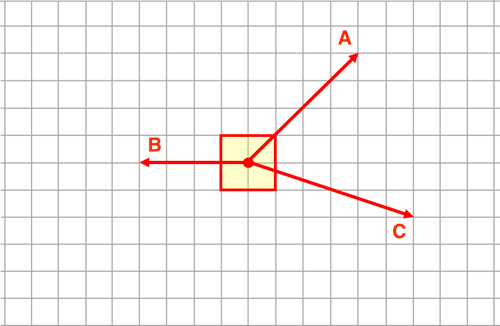When all the individual forces acting upon an object are balanced, then the object is at equilibrium. When a force is at an angle to the traditional x-y axes, it is customary to consider the components of the force in the analysis. The components of a force vector are the projections of that vector onto the x- and the y-axis. By thinking in terms of components, it is considerably easier to determine what forces would be required to bring an object to equilibrium.
Getting your Trinity Audio player ready...
Hold down the T key for 3 seconds to activate the audio accessibility mode, at which point you can click the K key to pause and resume audio. Useful for the Check Your Understanding and See Answers.
Balance It! - help
There are a total of 60 Questions in this activity. Eave level includes three questions that are picked at random. As such it is impossible to predict which question prompted you to click the Help Me! button and arrive at this Help page. An example question is shown below.
Version 1:
Consider the three angled forces below. Add one E-W force and one N-S force so that the object is at equilibrium.

Try this link to The Physics Classroom Tutorial for more help: